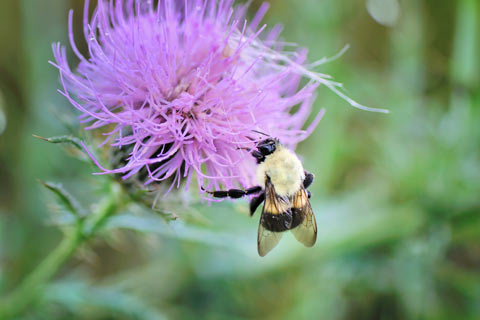How to Grow Milk Thistle

Milk thistle produces purple flowers all summer, and has lovely milk-white veined leaves.(41)
Wild Milk Thistle is Invasive
Milk thistle is considered by some as "the worst weed in the entire U.S." and a "noxious weed" in Australia. Why? Even though milk thistle is a beneficial plant, it crowds out other plants.(2, 7)
Even if you don't plan on harvesting milk thistle for herbal medicine, you might want to grow some anyway. Why?
- Milk thistle is a source of pollen for honey bees, especially during summer months.(42, 43)
- Goldfinches love milk thistle and use it for nesting material.(2)
- Milk thistle attracts butterflies — especially the Painted Lady butterfly.(2)
Hints for Growing Milk Thistle
Milk thistle is easy to grow in a variety of soil types — including sandy and heavy clay dirt. Although milk thistle is a drought resistant plant, in extremely dry conditions plants should be watered until established.(1)
Things to keep in mind when planting and harvesting milk thistle:(41, 44)
- Pick a sunny to partly-sunny spot.
- Sow seeds directly outside (½ inch deep) in March or April for summer flowering and a biennial plant. Space each hole 2½-3 feet apart. Use 3-4 seeds for each hole and then thin out the weakest ones when they germinate in 10-20 days.
- Harvest leaves and stems in spring, and flower buds summer through autumn. Seeds can be harvested from dried flower heads in the autumn.
Disclaimer: This website is not intended to replace professional consultation, diagnosis, or treatment by a licensed physician. If you require any medical related advice, contact your physician promptly. Information presented on this website is exclusively of a general reference nature. Do not disregard medical advice or delay treatment as a result of accessing information at this site.


